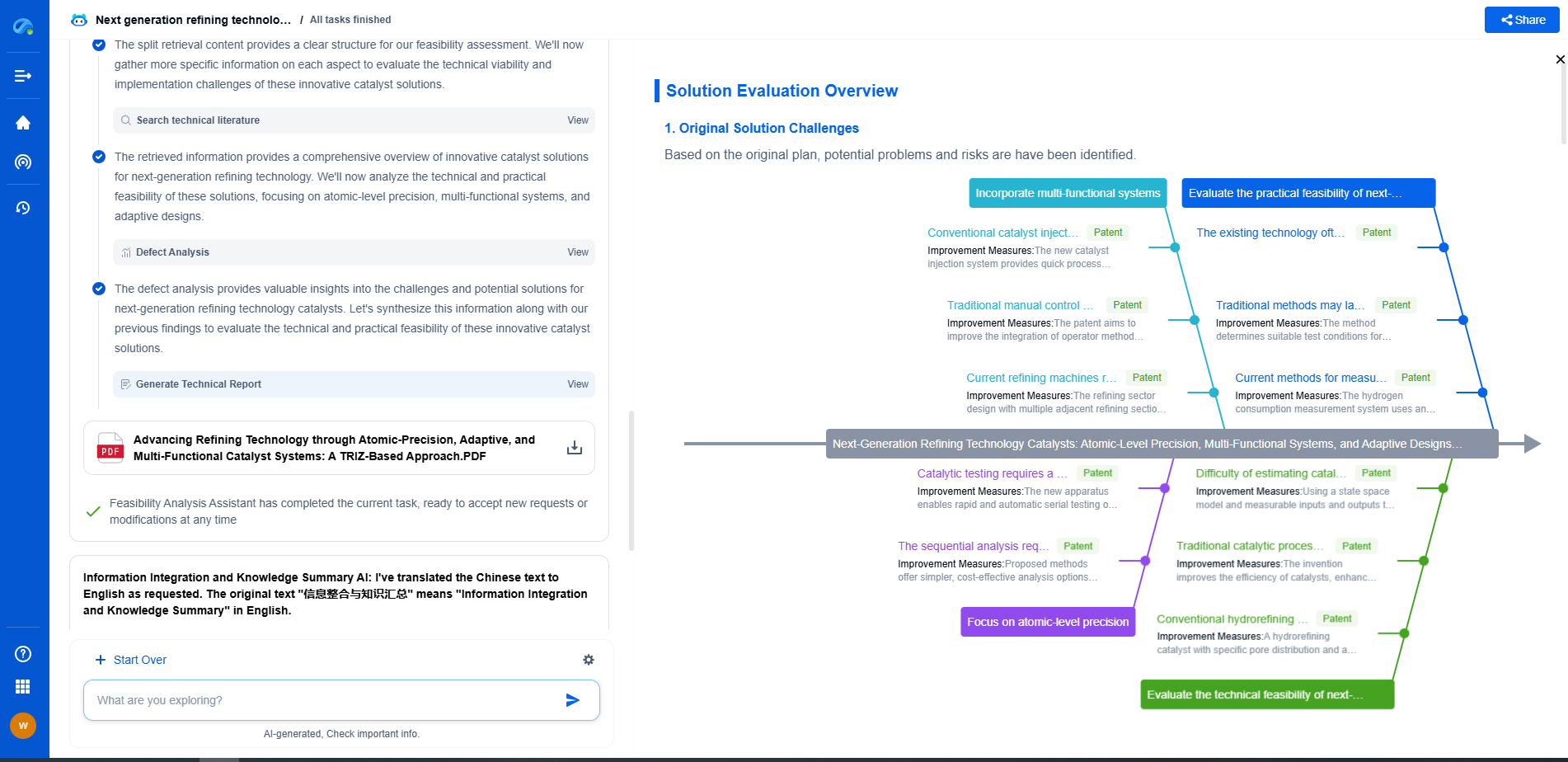Waveguide Alignment Errors: How to Minimize Signal Loss in Microwave Systems
JUN 26, 2025 |
Waveguides are critical components in microwave systems, acting as channels that direct electromagnetic waves from one point to another efficiently. However, the performance of these systems can be significantly impacted by waveguide alignment errors. Proper alignment is essential to minimize signal loss and enhance the overall efficacy of microwave systems.
The Impact of Misalignment
Misalignment in waveguides can lead to a range of problems, primarily signal loss and degradation of the overall system performance. When waveguides are not properly aligned, the electromagnetic waves can reflect, scatter, or even be absorbed by the waveguide walls, leading to a reduction in signal strength and quality. Moreover, misalignment can introduce phase errors, which are detrimental in systems requiring precise timing and synchronization.
Factors Contributing to Alignment Errors
Several factors contribute to waveguide alignment errors. Mechanical inaccuracies during installation or maintenance, thermal expansion and contraction, and vibrations from nearby machinery can all lead to misalignment. Additionally, improper handling or design flaws can exacerbate these issues. Understanding these contributing factors is the first step towards effective mitigation.
Techniques to Minimize Signal Loss
1. Precision Engineering and Design
Investing in high-quality engineering and design is crucial to minimizing alignment errors. Precision-machined components ensure that waveguides fit together seamlessly, reducing the risk of misalignment. Additionally, employing advanced simulation tools during the design phase can help predict potential alignment issues and allow for proactive adjustments.
2. Proper Installation and Regular Maintenance
Correct installation is vital to ensure waveguides remain aligned. Trained professionals should handle the installation process, employing laser alignment tools or other advanced techniques to achieve optimal alignment. Regular maintenance checks are equally important, as they help identify and rectify any alignment problems that may arise due to environmental or operational changes.
3. Environmental Control
Controlling the environmental conditions where waveguides operate can also minimize alignment errors. Implementing temperature control systems can reduce the effects of thermal expansion and contraction. Additionally, isolating the waveguides from sources of vibration and mechanical disturbance can help maintain proper alignment over time.
4. Use of Flexible Waveguide Sections
Flexible waveguide sections, also known as twists or bends, can accommodate slight misalignments without significant signal loss. These components are particularly useful in systems where rigid mechanical alignment cannot be maintained due to environmental or design constraints.
Monitoring and Testing
Continuous monitoring and testing are indispensable for ensuring waveguide alignment and minimizing signal loss. Utilizing signal diagnostic tools can help detect anomalies in real-time, allowing for immediate corrective action. Regular testing and recalibration can also ensure the system maintains optimal performance throughout its operational life.
The Role of Training and Awareness
Educating personnel involved in the installation, maintenance, and operation of microwave systems is crucial. Training programs should emphasize the importance of proper waveguide alignment and provide practical knowledge on how to achieve and maintain it. Awareness of the potential consequences of misalignment can motivate staff to prioritize alignment as part of their routine operational checks.
Embracing Technological Advances
Technology is continually evolving, offering new solutions to age-old problems. Embracing technological advances such as automated alignment systems, AI-driven diagnostics, and state-of-the-art materials can significantly reduce alignment errors in waveguide systems. Staying abreast of these developments can offer competitive advantages and enhance system reliability.
Conclusion
Waveguide alignment errors can be a formidable challenge in microwave systems, but with careful planning, precision engineering, and regular maintenance, these errors can be minimized. By understanding the root causes and employing strategic techniques to address them, signal loss can be significantly reduced, improving the overall performance and reliability of microwave systems. As technology advances, continued innovation and education will be essential to staying ahead of these challenges.
Empower Electromagnetic Innovation with Patsnap Eureka
From high-frequency antenna arrays and electromagnetic shielding to plasma propulsion and wave-based energy transfer, the electromagnetic domain sits at the core of next-generation technologies. Yet navigating its vast landscape of patents, research papers, and evolving technical standards can be time-consuming and complex.
Patsnap Eureka, our intelligent AI assistant built for R&D professionals in high-tech sectors, empowers you with real-time expert-level analysis, technology roadmap exploration, and strategic mapping of core patents—all within a seamless, user-friendly interface.
👉 Experience Patsnap Eureka today and transform how your team navigates the complexity of electromagnetic innovation.
- R&D
- Intellectual Property
- Life Sciences
- Materials
- Tech Scout
- Unparalleled Data Quality
- Higher Quality Content
- 60% Fewer Hallucinations
Browse by: Latest US Patents, China's latest patents, Technical Efficacy Thesaurus, Application Domain, Technology Topic, Popular Technical Reports.
© 2025 PatSnap. All rights reserved.Legal|Privacy policy|Modern Slavery Act Transparency Statement|Sitemap|About US| Contact US: help@patsnap.com

